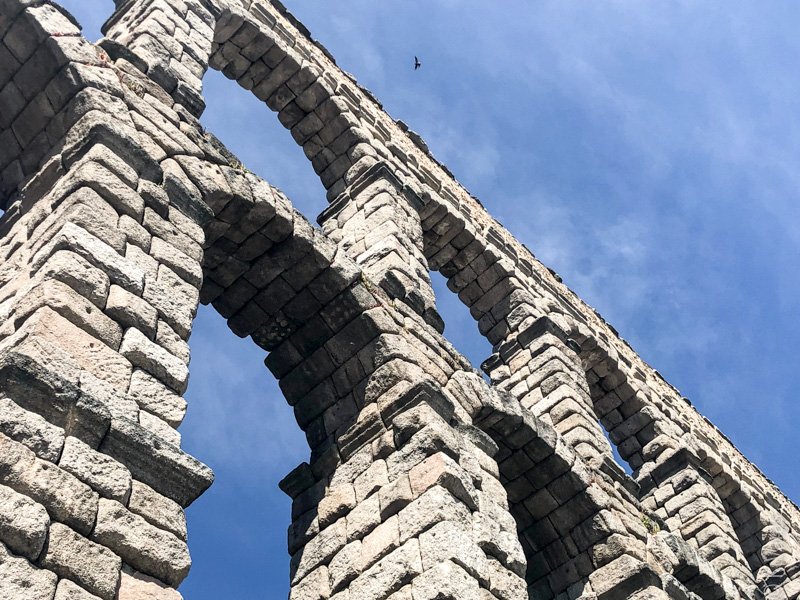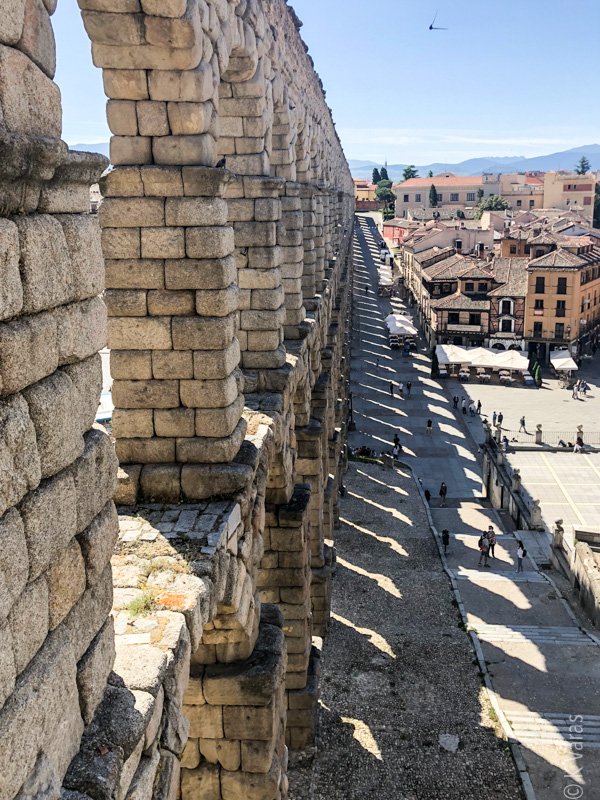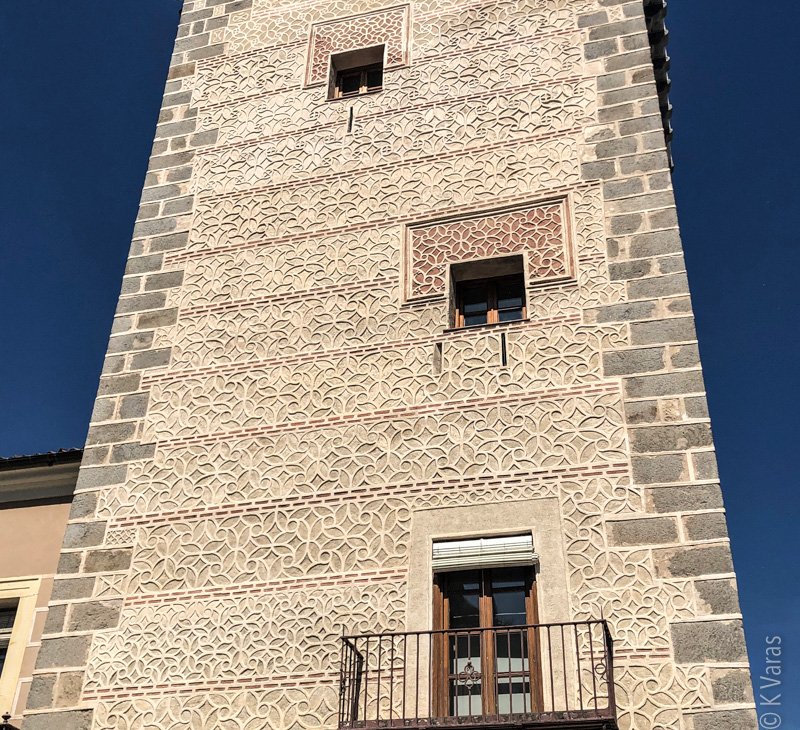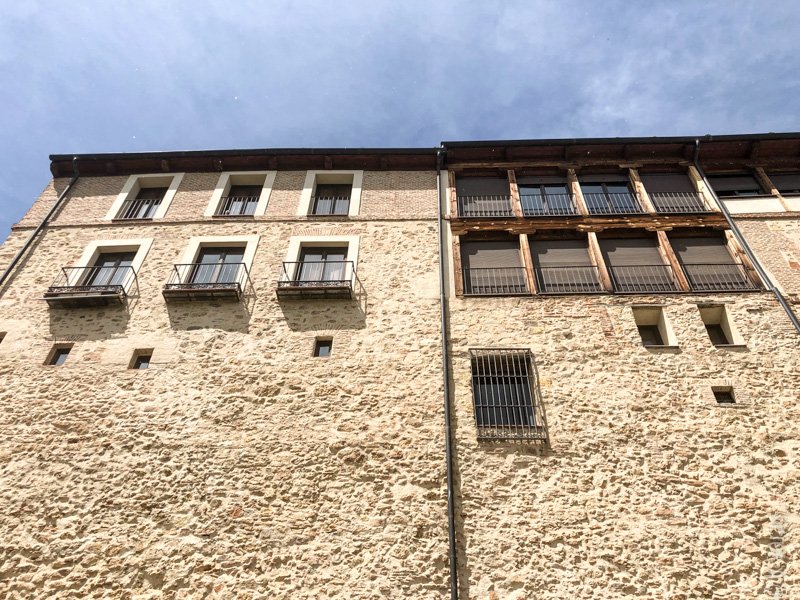
Segovia, the Jewel of Castilla y León
About 80km northwest of Madrid, in the Autonomous Community of Castilla y León, lies the beautiful Segovia. Its roots go very far back, to the Celts, who then relinquished it to the Romans. The Romans were around until the Muslims made their way north during the Conquista, even though they left the city abandoned. It wasn’t until the XII century that the city was resettled, mostly by Christians from the north of the Iberian Peninsula, as well as people from beyond the Pyrenees. And this is when its importance, strategic and commercial, grew significantly. For many years it was a centre for textiles, though the city did go through some rough patches, despite its advantageous location. Fortunately, in 1764, the Royal School of Artillery was opened. This first military academy in Spain is still in operation today and thanks to an economic rebirth in the XVIII and XIX centuries, the city has enjoyed continued prosperity. It also doesn’t hurt that there is a magnificent Roman aqueduct, one of the last Gothic-style-built cathedrals in Europe, and a picturesque castle that was the model for the iconic Disney one to keep Segovia a true Spanish jewel. And those are just three of the main attractions.
I have wanted to visit this city forever now and I’m so glad I finally got a chance to do so. In order to get there, however, I got to take a train from one of the other train stations in Madrid: Chamartín. This station is located in the north of the city and it is the one from which I will be going to Bilbao soon, so I was happy to have this trip as a dry run. I gave myself way more time than Google said I needed, but the metro left me rather far from the train part of the station so by the time I was near the security gate, I literally had 3 minutes to departure! I have no idea what happened and I got some very dirty looks from the staff, but all the walking I’ve been doing lately has apparently made me much faster and I made it on board the train as it started to pull out of the station. This was quite thrilling considering how much time I normally give myself to arrive anywhere and I still don’t understand why I lost so much time finding my way this time but all I can say is I’m glad I didn’t stop for that coffee and croissant I had considered for half a second.
Happy to be in my seat and catching my breath, I wasn’t terribly happy about the number of people on this train with me. It seems Segovia is a very popular destination on a sunny Friday. Fortunately, the ride is pretty short, a mere 30 minutes, and I was once again outside a station looking for a way to get into the town centre. This time I was more prepared and had cash ready; the bus that would take me directly to the aqueduct was parked right in front and a line of tourists were boarding it already. I hopped on and settled in for the 15 minute ride to one of the most iconic monuments in Europe.

The Roman aqueduct in Segovia is one of the best-preserved elevated Roman aqueducts in existence. Its age has been calculated to be from 117CE … so a very long time ago, indeed. It was built to carry water from the Río Frío northeast from the city, some 16km away. That doesn’t seem far but the aqueduct is an engineering marvel nonetheless, and its major span has been wowing people for a long time, so much so that monarchs over the ages have gone to great length to maintain it in excellent condition and keep it functioning throughout the centuries. It’s really quite impressive that it provided water to Segovia until the mid-XIX century. Those Romans sure knew how to build good, lasting infrastructure … much of today’s world could learn from them.
The aqueduct takes centre stage in Plaza del Azoguejo, a large open space at the end of a street that comes down a hill; the cars then have to make a sharp turn right and go down the very aptly named Calle Roma and away from the centre. It’s very difficult to describe this … suffice to say the aqueduct dominates the view coming and going. Unsurprisingly, it’s impossible not to be in awe of this thing: I took a ridiculous number of photos from every angle possible, then climbed the stairs on one side hoping to get closer to the structure and also enter the old part of the city at a higher level.

As I wandered through the streets I noticed that many if not most of the buildings in Segovia have very special façades. elaborately decorated with sgraffito (esgrafiado in Spanish), a decorative technique in stone and plaster unique to the region. I think this is what made me fall in love with this city: the creativity the builders (or perhaps the architects?) used to decorate their structures made its walls alive with unique patterns and textures, especially when the sun moved across the sky casting ever-changing shadows.

Eventually, I made it to Plaza Mayor where I needed to take a short break. That croissant I wanted at the train station in Madrid was still on my mind since I didn’t have much time for breakfast before leaving. I found a table at a café in the plaza and had a coffee and a mini-sandwich, both of which I enjoyed while watching the smallest protest I’ve had the pleasure witnessing (to-date) and sneaking a peek at the majestic cathedral just around the corner (you can read more about that here). I spent a bit of time inside that cathedral but then continued my exploration of the old town. I was quite fascinated by some of the stores still open (don’t forget that I normally roam the streets when everyone is enjoying their siestas), a very weird looking dog with a mohawk, and, most of all, the little lanes that took me through tiny plazas and along ancient walls. And everywhere I turned I saw more stunning examples of sgraffito. If anyone were to follow me and saw the things I took pictures of they’d think I was totally insane but I’m pretty used to people thinking that about me and I don’t mind.

After about half an hour, I had made my way to the western edge of the old town where I found an old house for sale, a house that, if restored, would have the most glorious views in town: looking out over the countryside one one side and a fairytale castle on the other. If only it weren’t so far from the sea. When I turned my gaze from this renovation potential, I was rewarded with the Alcázar de Segovia, the medieval fortress that really looks more like it belongs in a Disney movie, something that Walt probably thought too since the one you see at the beginning of his movies was styled after Segovia’s. Yes, it is that pretty. But more about that in a future post.

I was getting a bit hungry after all the walking and picture taking, so I headed towards the main plazas knowing that was where many of the restaurants were. The route there took me along the grand Segovia wall, or at least the south part of it. The path took me to one of the large gates, Puerta de San Andrés, and a section of the wall where homes were built on top of it. That makes for very tall structures but also offers amazing views. I didn’t recognize that this was the Jewish Quarter until I came across a symbol in the stones steps which made the lightbulb go off in my head. In the good old days of physical maps I probably would have marked something down and it would have been easy to remember all the cool things I was supposed to have visited but since I was playing “lost” and trying to not constantly look at my phone, I was forced to live with my short memory. Oops. That said, my battery was running quite low after the ridiculous number of photos I had taken. I was very glad I have become more conscientious about carrying my external battery charger and had something to juice up my phone while I had a late meal at a restaurant close to the aqueduct. The wind had picked up and I still had a bit of time before my train back to Madrid so I rested a bit and then explored the commercial area of Segovia Old Town, a wide avenue, aptly named Avenida Acueducto. This area was full of restaurants and fancy shops, and from almost every angle you could see the aqueduct itself.

Drawn to it like moth to a flame, I gave up window shopping and returned to the main plaza. I still had a little time before the bus going back to the train station was due to arrive so other than taking a whole bunch more photos, I walked up the hill overlooking the aqueduct and found a bench where I could read my book while feasting my eyes on the views all around. It made me think how beautiful this city is and how I honestly wished it were closer to a sea just so I could put it on my very short list of places I’d like to live. As it is, once again, I had to make a promise to myself that I will come back and take another thousand pictures because it really is so worth it. I absolutely loved Segovia and you will too.










































































































